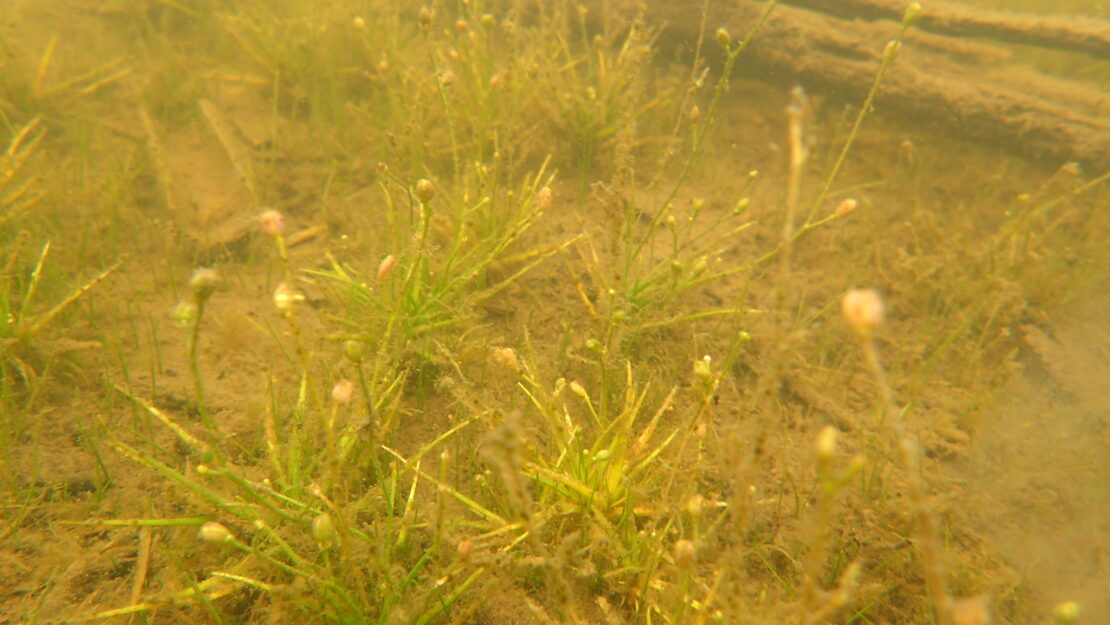Uncovering Minnesota’s Underground Forests: A Deep Dive into Aquatic Plants

By Ava Schimnowski, Aquatic Plant Management Specialist Individual Placement /AmeriCorps member at Minnesota Department of Natural Resources Division of Fish and Wildlife
If you’ve ever spent time at a freshwater lake or pond, you’ve probably noticed the diverse formations of plants growing in and around the substrate. They are often incorrectly referred to as seaweed and viewed as a nuisance to recreation. However, aquatic plants are a crucial component to ecosystem functioning and provide many benefits to aquatic environments. They provide food and shelter for waterfowl and fish, improve water quality and clarity by preventing the re-suspension of bottom sediments, protect shorelines and lake bottoms from erosion, and more. They can even prevent algae, which thrives on dissolved nutrients, from becoming a nuisance.
There are four major categories of aquatic plants:
- Algae: Although not true plants, algae play a vital role in aquatic ecosystems. They have no true roots, stems, or leaves and range in size from tiny, one-celled organisms to large, multi-celled plant-like organisms, such as chara.
- Submerged plants: These plants have stems and leaves that grow entirely underwater, although some may also have floating leaves. Flowers and seeds on short stems that extend above the water may also be present (e.g. coontail).
- Floating-leaf plants: These plants are rooted in the lake bottom, but their leaves and stems extend out of the water (e.g. water lilies).
- Emergent plants: These plants are rooted in the lake bottom, their leaves and stems extend out of the water. These include cattails, bulrushes, and other emergent plants which typically grow in water less than 4 or 5 feet deep.
Understanding and appreciating these underwater forests is essential for maintaining healthy aquatic ecosystems. By recognizing the value of aquatic plants, we can take steps to protect them, ensuring that Minnesota’s lakes and ponds remain healthy for generations to come.
Resources: